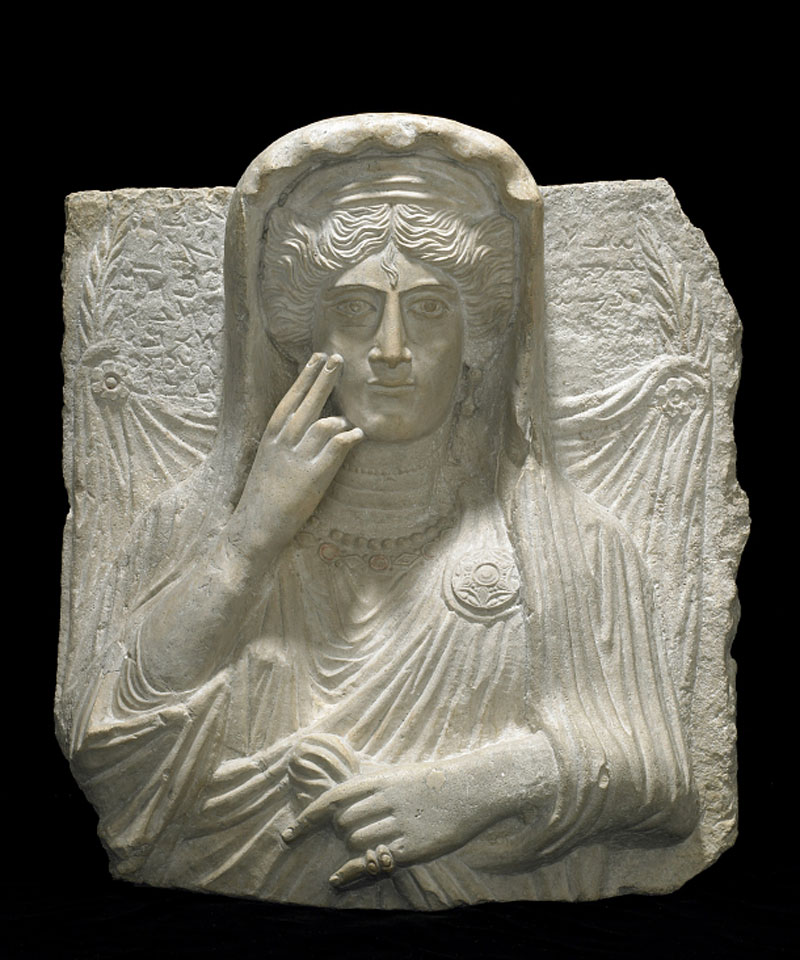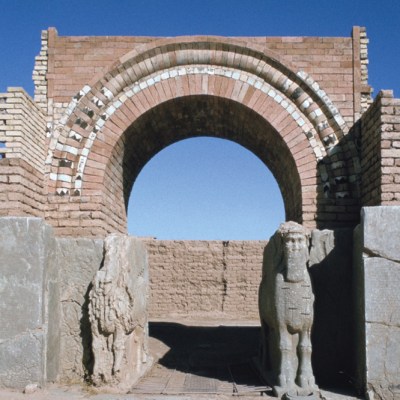In light of recent news from Palmyra we spoke to Julian Raby, director of the Smithsonian’s Freer and Sackler Galleries, about how museums can help tackle cultural destruction around the world
The Freer and Sackler Galleries have recently opened an exhibition focused on Palmyra. What’s the thinking behind the display?
We’ve put out one particularly lovely example of a Palmyrene funerary bust and juxtaposed it with images on a screen – it’s not really an exhibition, it’s a kind of accent, to ask people to stop and reflect on a place that’s in the news. Palmyra is not just a bunch of stones; it was inhabited by the mercantile communities on the border between Syria and the desert, and we know a lot from Palmyrene inscriptions about their trade with, for example, Greek merchants in Babylon. It opens up a larger global arena that leads to India, Central Asia, Iran, Iraq. It was a very important stop on the Silk Road.
How’s the response been from visitors? Are people aware of the significance of the site?
I think most people have either never heard of Palmyra before or can’t visualise it. We’ve tried to connect people to the humanity of the site. The beautiful bust of Haliphat was personalised with inscriptions. It would have been used in a tomb to close off wher the human remains were. People would visit: in one or two cases there are sculpted scenes of families having banquets. These are places that people would visit to enforce their sense of family.
We’re also showing images that give a sense of the importance of Palmyra in the Western imagination. One is a collection of mid 19th-century photographs by Félix Bonfils, but the other is more important and that’s Robert Wood’s famous The Ruins of Palmyra (1753). It was one of the most important books for all neoclassical architects. On Plate 18 there’s a depiction of an ‘Eagle on a Roman temple’ that became the model for the one on the US seal. The north entrance to the Freer, which was built in 1919, is modelled on a Palmyrene ceiling.
Are you hoping other museums will follow suit in making their collections more accessible?
We all have to. The problem is not just to show things independently but also to find ways in which we can use open data to link our material. A single search should be enough to find a whole mass of material. It’s very independent at the moment. It’s very focussed on individual efforts rather than collective efforts.
I would like to see not just a database of objects but also a database of photographic records and so forth. Let’s not just think about it in terms of wilful destruction and what’s happening in the Middle East. The Smithsonian has been trying to help the State Department pull together thousands of images of Nepal from before the earthquake, because those could help with reconstruction. Documentation is really important.
There are other things that we can do, too. The Smithsonian, for example, has a very vigorous 3D scanning department. The majority of the Palmyrene busts were removed from the site a long time ago: there are collections in Damascus, the British Museum, the Louvre, the Met…I could imagine a scanning campaign that might enable us to see where the things came from. You’re never going to be able to put the originals back – not only because they’ve been dispersed but because they would be prone to further destruction. We need to start thinking differently about how we activate the objects in our collections. We need to contextualise them, but also to think about how material that’s been dispersed can become a collective resource.
How else is the Smithsonian involved in efforts to combat cultural destruction?
We’re taking over the conservation programme in Erbil, which is an extraordinary example of how completely different communities from Iraq have coalesced working together on conservation. It’s important that efforts like this continue not just for the care of objects but because the process can also be a healing one. We’re also conducting workshops in southeast Turkey, where people bring antiquities and other heirlooms of cultural significance over the border. People are helping make sure that these objects are properly packed, conserved, and looked after.
The American Association of Museum Directors (AAMD) is working on a set of protocols looking at what we do with antiquities that have been impounded by authorities, or that need a safe haven outside of the country or even the region. We need to find a way in which museums across the world – in Japan and the Gulf, in Europe and the States – can offer help and short-term stewardship, in a way that can never be mistaken for appropriation. It needs to be completely transparent, everything needs to be published and there are many other principles that need to be invoked. Hopefully we can work on something that could be useful for the entire museum community.
Is looting in the Middle East as big a problem as people fear, and are there any ways of tackling it?
I think all you have to do is to look at the satellite imagery of sites in Iraq and Syria. People have just been digging holes relentlessly. The problem is not just the removal of artefacts: it’s also the disruption and destruction of archaeological evidence. All the stratification of the daily detritus that provides one with a better understanding of the objects’ context – all of that’s been destroyed. People have concentrated too much on the monetary aspects of looting. We’re not talking about huge sums here, but even small sums can encourage people to rob a landscape.
We have to be aware that objects will be appearing in different countries around the world with no provenance at all. The AAMD needs to stick closely to the UNESCO 1970 Convention guidelines, and other museums should be encouraged to do the same. I think American museums are not acquiring antiquities at the moment, to any great extent, but there’s a vast trade elsewhere.
Meanwhile, museums that have large collections need to be sharing – not just on a temporary basis, not just on a three-month basis. The British Museum’s decision to send 500 major objects to the Gulf is a very constructive one. And think of China, where thousands of institutions are being built: at the 100th anniversary of the National Museum in Tiananmen Square I remember my colleagues from a provincial museum saying ‘don’t think it’s just in Beijing that people want to see Greek and Roman sculpture’. It becomes an onus on all of us to share at a time when the internet is creating a set of common interests around the world.
The news from Palmyra this week has been extremely worrying. Are you pessimistic about the fate of the site given Isis’s track record?
There was also some destruction from government planes. Who knows where the destruction will come from? One thing I haven’t heard discussed is the fact that one of the greatest of all jihadists, Nur ad-Din Zangi (from the 12th century) actually used classical language in several buildings. In one instance he used a classical pediment and what’s known as a muqarnas dome of the type that Isis destroyed in Iraq, as a way of symbolising the fact that the Zangids had united Syria and Iraq. In other words, one of Isis’s avatars took a diametrically different approach from the destructive approach that they’re taking. I don’t think that’s been mentioned at all.
Related Articles
Haunting photographs of Palmyra go on display at the Smithsonian
Editor’s Letter: The cultural desecration of Iraq
The destruction of Nimrud is a crime against humanity
Can Iraq’s Antiquities be Saved? Interview with Mark Altaweel



